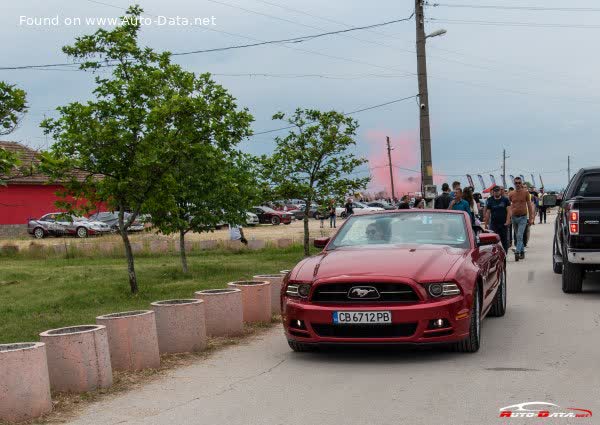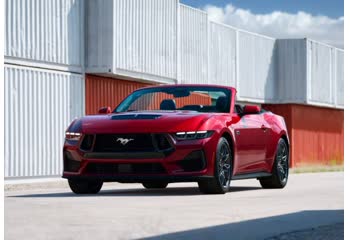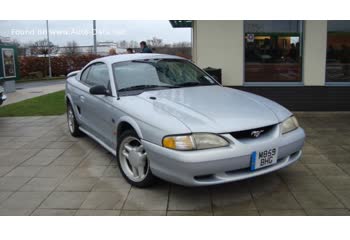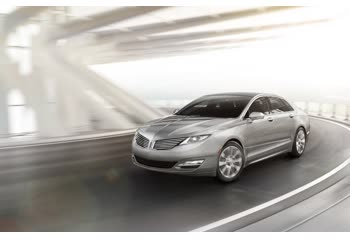Everything you need to know about specifications and performance - Ford Mustang 2012 - 3.7 V6 (305 Hp) Automatic

Overview:
What is the engine capacity of a Ford Mustang 2012?
The engine capacity of the Ford Mustang 2012 is 3731.
Ford Mustang 2012 How many horsepower?
The engine power of the Ford Mustang 2012 is 305 Hp @ 6500 rpm..
What is the Ford Mustang 2012 engine?
Ford Mustang 2012 engine is Duratec 37. (Click to see other cars using the same engine)
How much gasoline does a Ford Mustang 2012 consume?
The Ford Mustang 2012 consumes 10.2 liters of gasoline per 100 km
General:
Brand: Ford
Model: Mustang
Generation: Convertible V (facelift 2012)
Modification (Engine): 3.7 V6 (305 Hp) Automatic
Start of production: 2012
End of production: 2014
Powertrain Architecture: Internal Combustion Engine
Body type: Cabriolet
Seats: 4
Doors: 2
Engine:
Power: 305 hp @ 6500 rpm.
Power per litre: 81.7 hp/l
Torque: 380 nm @ 4250 rpm.
Engine Model/Code:Duratec 37
Engine displacement: 3731
Number of cylinders: 6
Engine configuration: V-engine
Number of valves per cylinder: 4
Fuel injection system: Multi-port manifold injection
Engine aspiration: Naturally aspirated Engine
Valvetrain: DOHC, Ti-VCT
Engine oil capacity: 5.7 l
Coolant: 11.7 l
Engine layout: Front, Longitudinal
Cylinder Bore: 95.5 mm
Piston Stroke: 86.7 mm
Compression ratio: 10.5:1
Maximum engine speed: 7000 rpm.
Performance:
Fuel Type: Petrol (Gasoline)
Fuel consumption (economy) - urban: 12.4 l/100 km
Fuel consumption (economy) - extra urban: 7.8 l/100 km
Fuel consumption (economy) - combined: 10.2 l/100 km
Weight-to-power ratio: 5.4 kg/Hp, 184.1 Hp/tonne
Weight-to-torque ratio: 4.4 kg/Nm, 229.3 Nm/tonne
Space:
Kerb Weight (kg): 1657
Trunk (boot) space - minimum: 272 l
Permitted trailer load with brakes (12%): 454 kg
Fuel tank capacity: 61 l
dimensions:
Length: 4788 mm
Width: 1877 mm
Height: 1417 mm
wheelbase: 2720 mm
Width including mirrors: 2035 mm
Front track: 1575 mm
Rear (Back) track: 1598 mm
Minimum turning circle (turning diameter): 10.2 m
Powertrain, Suspension and Brakes:
Drivetrain Architecture: The Internal combustion Engine (ICE) drives the rear wheels of the vehicle.
Drive wheel: Rear wheel drive
Number of gears and type of gearbox: 6 gears, automatic transmission
Front brakes: Ventilated discs, 316x30 mm
Rear brakes: Ventilated discs, 300x19 mm
Assisting systems: ABS (Anti-lock braking system)
Steering type: Steering rack and pinion
Power steering: Electric Steering
Tires size: 215/65 R17; 235/50 R18
Wheel rims size: 7J x 17; 8J x 18
Front suspension: Independent type McPherson, Transverse stabilizer
Rear suspension: Rigid axle suspension, Transverse stabilizer, Coil Spring
See also

Last generation.
Its production began in 2024 until Now

Other generation.
Its production began in 2003 until 2004

Same production year and almost the same engine capacity.
Its production began in 2012 until 2016

Same production year and almost the same engine capacity.
Its production began in 2012 until 2016

Write a comment